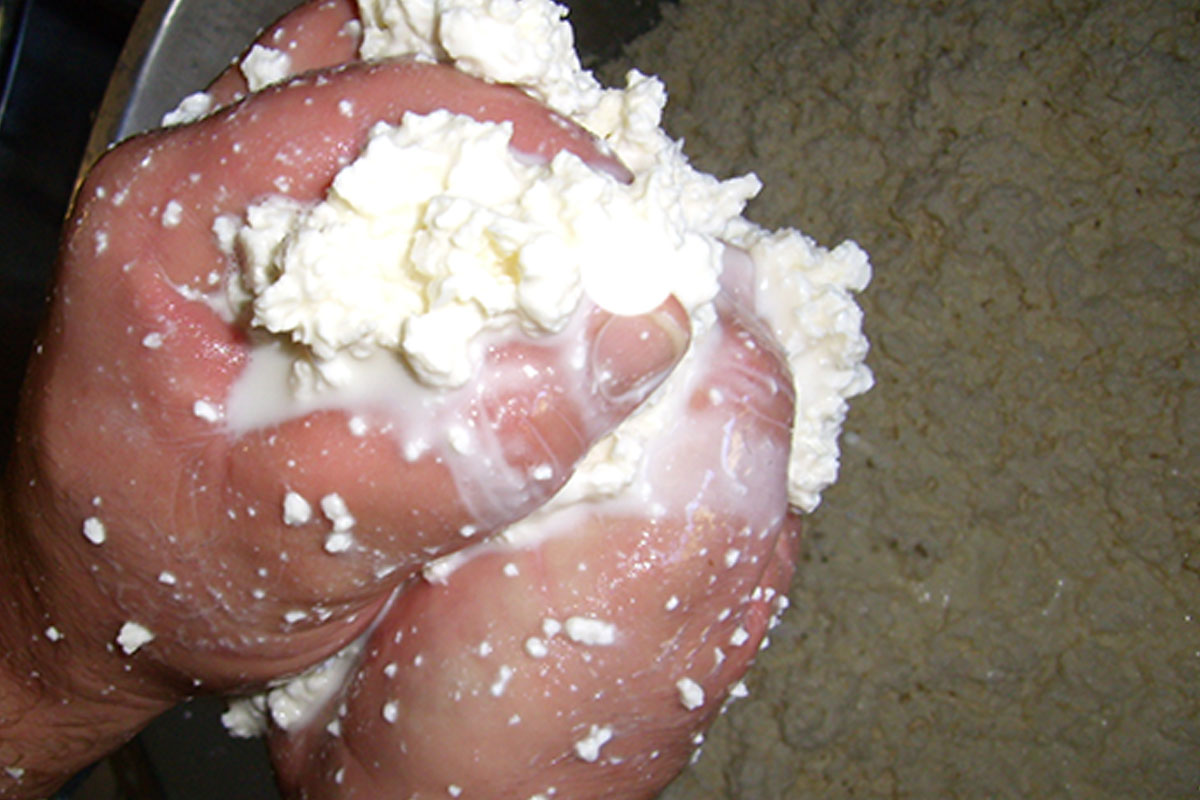STRETCHED CURD
the parmesan way

The ingredients
All about hot water!
Stretched curd cheeses are the result of a manufacturing process that has been developed in the southern regions of Italy. It is quite a different technique than the one that we use to make Parmigiano Reggiano; still, some years ago, our skilled, curious cheesemakers wanted to try it using our good, high-quality mountain milk. So were born Mozzarella, Scamorza, Caciocavallo and Ricotta “Made in Valceno”, which have nothing to envy to their more famous counterparts made in Puglia or Campania. The main ingredients are the same: fresh milk, probiotics and rennet; yet, once the curd is formed, the process continues into hot water. In this way, the casein melts and becomes elastic and pliable.
The ingredients

The process
First melt, then stretch
First, we pasteurize our fresh mountain milk, then we add selected alive probiotics; about 30 minutes later, we add the rennet and leave everything to rest. The milk coagulates and turns into a white mass, which we break into pieces, each one about the size of a hazelnut. Then we use a steam stretching machine to turn the pieces into a homogeneous, flexible curd. Unlike water, steam makes it possible not to “wash” the taste away, thus obtaining a sweeter cheese with a more intense flavour. The stretched curd obtained through such process can be formed in many shapes, and turn into several different cheeses with a few variations in the process.
The process

The cheeses
Mozzarella, Caciotta, Scamorza, Caciocavallo
If we just cut the curd into small pieces and shape each one of them into a sphere, we will obtain Mozzarella. As soon as we shape it, we immerse it into a solution of water, salt and whey: the same preservation liquid that keeps Mozzarella fragrant until consumption.
To make other cheeses, we cook the curd one more time, then leave it to rest: such process makes the product become dryer and firmer, and suitable for maturation.
If we cook the curd twice, then drain it and leave it to rest into rounded moulds, we will obtain Caciotta.
If we stretch the curd and form it into the typical pear-shape, it will become a Scamorza.
If we cook the curd for longer times, it will become drier and suitable for a longer maturation period: here’s Caciocavallo!
To make other cheeses, we cook the curd one more time, then leave it to rest: such process makes the product become dryer and firmer, and suitable for maturation.
If we cook the curd twice, then drain it and leave it to rest into rounded moulds, we will obtain Caciotta.
If we stretch the curd and form it into the typical pear-shape, it will become a Scamorza.
If we cook the curd for longer times, it will become drier and suitable for a longer maturation period: here’s Caciocavallo!
The cheeses

